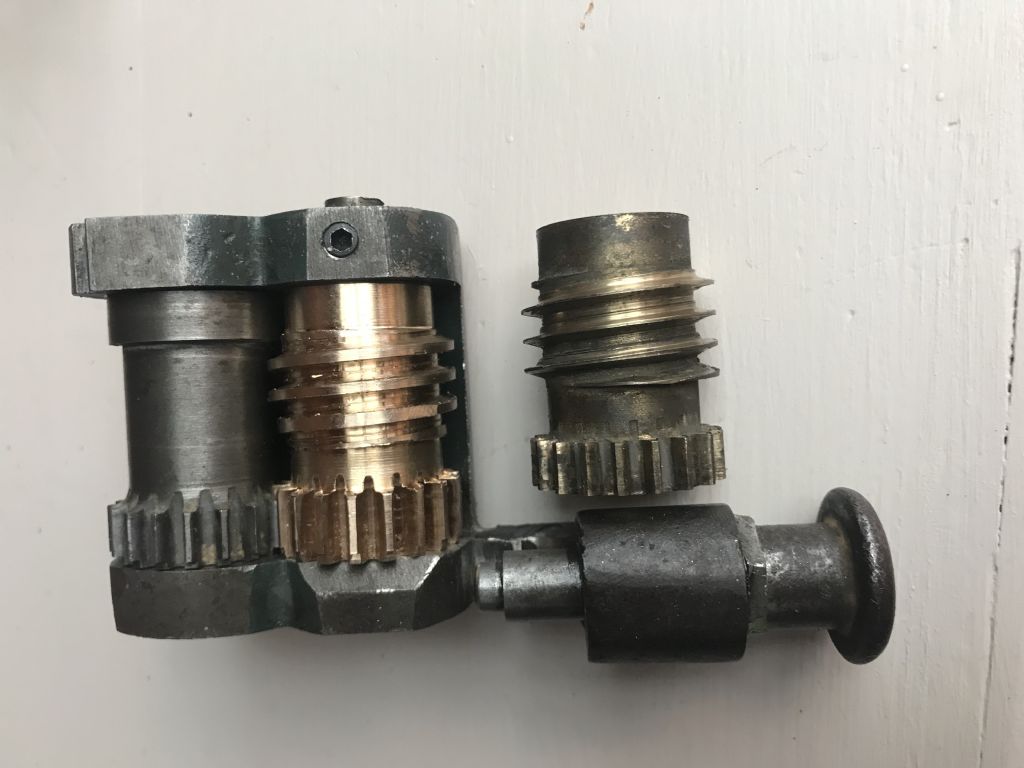I would suggest identifying the worm's and wheel's vital statistics and seeing what replacement stock items may be available and suitable for modifying to fit. You might need go nearest-metric and it could entail making or modifying other parts, but a bit more easily and potentially a lot more cheaply (say around £80 – £100 for a stock worm and wheel?) than having one-off specials made commercially.
Don't replace the one without the other.
This is similar to a problem I have with a Denbigh horizontal mill whose long-feed worm wheel is there (part of the lead-screw nut) but its worm and drive are long-lost. Another contributor here suggested I adopt that solution, turning the original wheel down to create a seating for a suitably bored-out new wheel, bought together with its appropriate worm.
One advantage is that you know the worm and wheel are matched, and anyway, as I think he pointed out to me, there is no use in trying to match a new worm to a wheel that will also be worn, and may be of different pressure-angle to boot.
The steel wearing much more severely than the bronze is not unusual, and some combinations of bronze and steel are worse than others for decades of living together in perfect harmony. The lathe's makers would have used the best but assumed a finite life. I don't know why but I suspect the softer material eventually becomes a de facto lap.
One point to watch – it applies to my mill but I can't quite be sure from your photos – is the hand of the worm. Most stock worms and wheels are right-hand thread. So if your lathe's parts are LH, the transmission stockists might have the right diameters but need to make or order the LH versions specially. If so I'd naturally expect a delay while a few more orders for south-paw worms and wheels come in.
====
Worms with paws, North or South…? I'll keep my eyes open when I'm next digging the garden.
Pete Rimmer.


















